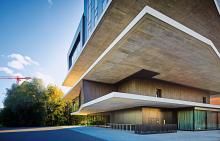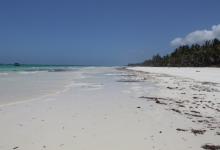LafargeHolcim and Seaboost, a marine biodiversity solutions company, have developed artificial reefs to help support the marine ecosystem on the French Mediterranean coast.
Lafarge says marine habitats have been significantly damaged in recent decades due to global warming and pollution, disturbing the balance of oceanic ecosystems.
An estimated quarter of the world’s coral reefs have suffered irreversible damage, and two-thirds are under threat, Lafarge adds.
The partnership believes bio-active concretes for port infrastructures can help improve aquatic ecosystems.
The solution is a tailor-made reef design which is constructed via a special concrete formula. The concrete mix-design and placing process patented by LafargeHolcim allows the formation of a dense bottom layer topped with a layer of porous concrete. The concrete’s structural and chemical characteristics, as well as the reef’s design, were defined to allow a rapid colonisation by a great diversity of local marine animals and plants.
Andreea Enescu, head of transport infrastructure markets at LafargeHolcim, says: “The roll-out of the current project demonstrates our commitment to drive global sustainable development. This is certainly a step forward for the new maritime bio-receptive infrastructures.”
Initially, the reef units were immersed early in 2018 in the Mediterranean Sea and will be monitored over the next three years through acoustic, visual and photogrammetric measurements.
Marine specialists involved in the evaluation of the site’s rehabilitation, confirm that the first results show promising signs of success.
Both companies are working on other pilot projects around the world to evaluate how their solution can be extended to other areas which suffer from marine degradation.







